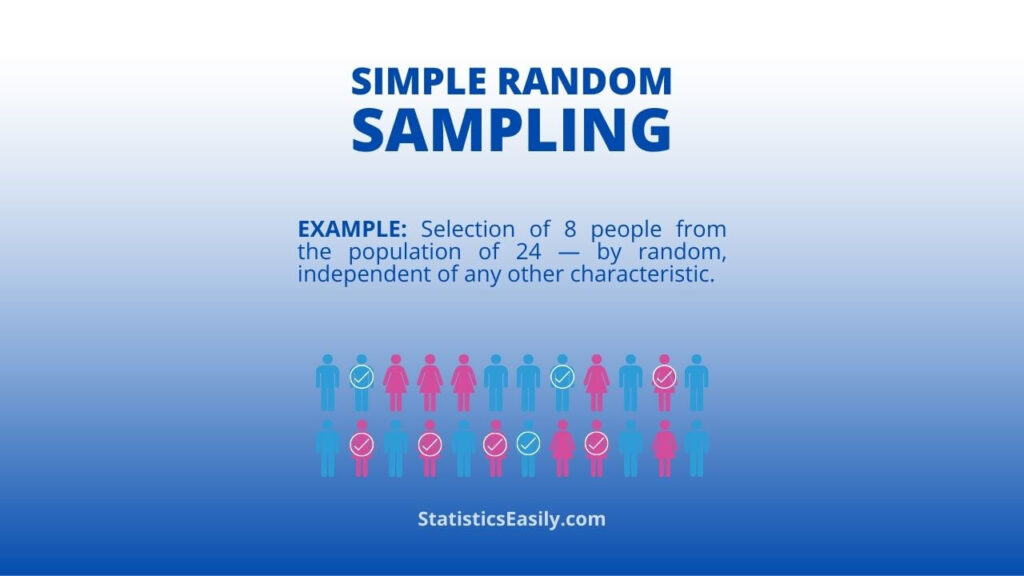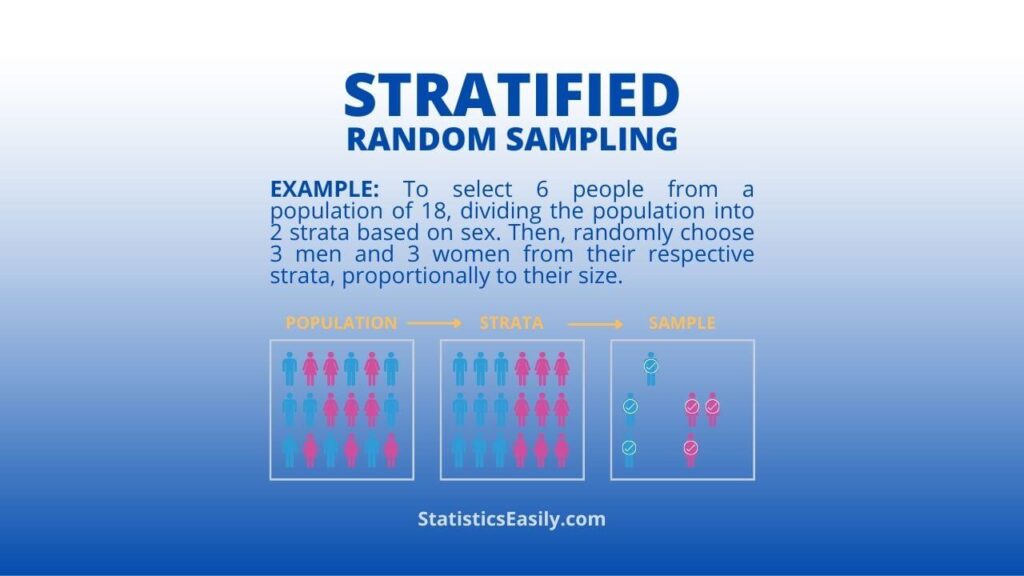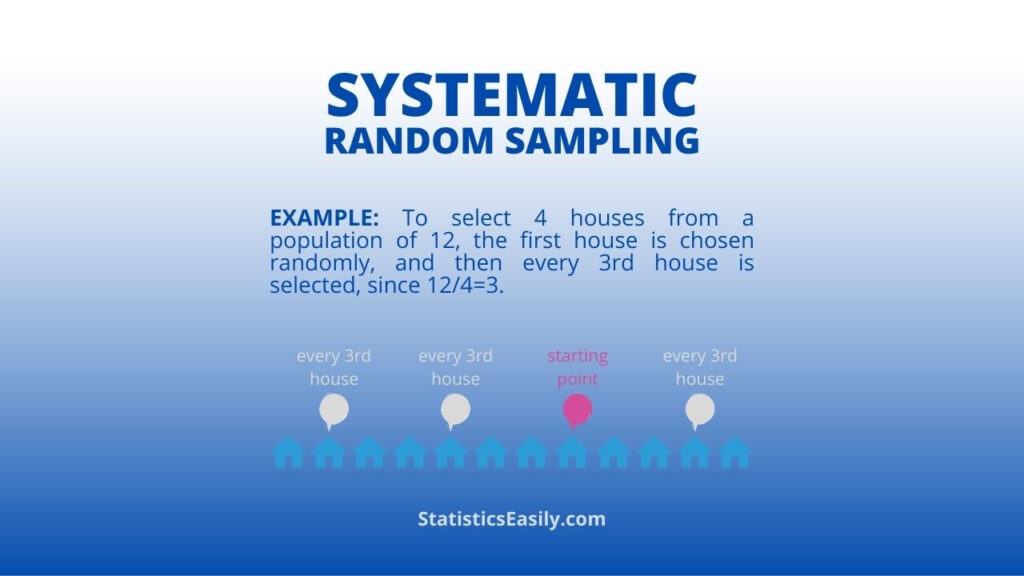Understanding Random Sampling: Essential Techniques in Data Analysis
Random sampling in statistics is a technique for selecting a subset of individuals from a larger population where each individual has an equal chance of being chosen. This method ensures representative samples, minimizes bias and allows for reliable inferences about the population based on the sample data.
Definition and Importance of Random Sampling
Random sampling is fundamental in data analysis, statistics, and broader scientific research. It refers to the technique of selecting individuals or elements from a population such that each individual has an equal probability of being chosen. This method is essential as it ensures a representative sample, thereby eliminating bias and enabling researchers to draw valid conclusions about the whole population based on the sample data.
The importance of random sampling in data analysis cannot be overstated. Instead, it forms the basis of hypothesis testing, inferential statistics, and prediction modeling. Without random sampling, we risk introducing selection bias into our study, which can lead to inaccurate conclusions and misleading results. The strength of random sampling lies in its ability to mirror the characteristics of the whole population within the sample, enhancing the reliability and validity of the analysis.
Highlights
- In random sampling, every member of a population has an equal chance to be chosen as part of the sample.
- It forms the basis of hypothesis testing, inferential statistics, and prediction modeling.
- Simple random sampling, the most basic form, is adequate when the population is homogeneous.
- Stratified random sampling divides the population into subgroups, ensuring sufficient representation.
- Systematic random sampling selects individuals at regular intervals from the population.
Ad Title
Ad description. Lorem ipsum dolor sit amet, consectetur adipiscing elit.
Types of Random Sampling
Simple Random Sampling
Simple Random Sampling is the most basic type of random sampling. Each population element has an equal chance of being selected in this method. The selection is often made through a random process, such as using a random number generator or drawing names from a hat. This method is most effective when the population is homogeneous, i.e., when the characteristics of individuals don’t significantly vary. Imagine a small town that wants to survey residents’ satisfaction with local services. They could use simple random sampling by assigning each resident a number and then using a random number generator to select 100 residents to participate in the survey.

Stratified Random Sampling
Stratified Random Sampling is a technique used when the population is not homogeneous. The population is categorized into strata (or subgroups) based on specific characteristics such as age, gender, or geographic location. Then, random sampling is applied within each stratum to select the individuals. This method ensures that each subgroup is adequately represented in the sample. Suppose a national clothing retailer wants to understand customer satisfaction across different age groups. They could divide their customer base into distinct age groups, such as 18-29, 30-39, 40-49, etc., and then perform simple random sampling within these strata to ensure that all age groups are adequately represented.

Systematic Random Sampling
Systematic Random Sampling involves selecting individuals at regular intervals from the population. The first individual is chosen randomly, and then every nth is selected. This method is often used when a complete list of the population is available, and it’s important to note that it requires the assumption that the list is not patterned in any way. Suppose a university wants to assess the effectiveness of its new online learning platform. They could use systematic random sampling by alphabetizing all students and selecting every 10th student for a survey. This method would provide a sample spread evenly across the entire student population.

Cluster Random Sampling
Cluster Random Sampling involves dividing the population into separate groups or clusters, usually based on geographic location. A random sample of clusters is selected, and all individuals within these chosen clusters are included. This method is often used when conducting simple or stratified sampling is costly or impractical. Consider a situation where a government health agency wants to study lifestyle habits nationwide. It would be impractical and expensive to randomly sample individuals from the entire country. Instead, they could use cluster sampling. They might divide the country into clusters by postcode and then randomly select a few postcodes. Every resident within the selected postcodes would be included in the study.
Ad Title
Ad description. Lorem ipsum dolor sit amet, consectetur adipiscing elit.
Challenges and Misconceptions about Random Sampling
Despite the importance of random sampling, several challenges and misconceptions can hamper its effective implementation.
One common misconception is that random sampling produces a sample that perfectly represents the population. While random sampling is designed to minimize bias and increase the likelihood of representativeness, it does not guarantee it. There’s always a chance that the sample might not accurately reflect the population due to random variation.
Another challenge is the practical implementation of random sampling. Often, having a complete population list or randomly selecting individuals may be impossible. For instance, respondents self-select to participate in online surveys, which may introduce bias.
Furthermore, there is a typical misconception that a larger sample is always better. While it’s true that increasing the sample size can often decrease the margin of error and increase the confidence level, it also increases the time and cost of data collection and analysis. Therefore, balancing the need for precision with practical considerations is crucial.
In summary, while random sampling is a cornerstone of statistical and data analysis, it has challenges and misconceptions. Understanding these can help researchers and analysts better design and implement their studies for robust, reliable, and meaningful results.
Recommended Articles
Want to explore more about data analysis and statistics? Don’t stop at random sampling. Our blog features many articles covering various topics that will deepen your understanding and enhance your skills. Whether starting or looking to advance your knowledge, we’ve got you covered. Look at our other posts today and continue your learning journey with us!
- Understanding Sampling Error: A Foundation in Statistical Analysis
- Selection Bias in Data Analysis: Understanding the Intricacies
- Simple Random Sample – an overview (External Link)
- Unraveling Sampling Bias: A Comprehensive Guide
- Random Sampling on Excel: An In-depth Analysis
- Understanding Random Sampling (Story)
- Generate a Random Number
Frequently Asked Questions (FAQs)
The four main types of random sampling are Simple, Stratified, Cluster, and Systematic Random Sampling. Each has its unique application depending on the nature of the population and the research question.
Random sampling is used to pick a representative sample from a larger population, ensuring each individual has an equal chance of being chosen. This minimizes selection bias, making inferences about the population more accurate.
A random sample in statistics is a subset of individuals or data points selected from a larger population. Each individual or point has an equal probability of being chosen.
Random sampling is done by assigning each individual in the population a unique identifier and then using a random process (like a random number generator) to select a subset of individuals.
The “best” random sampling method depends on the specifics of the study, including the nature of the population, the research question, and practical considerations. Each method has its strengths and weaknesses.
The choice of sampling method depends on several factors, including the research question, the nature of the population, the availability of a complete list of the population, and practical constraints such as time and cost.
Challenges of random sampling include practical implementation issues, the potential for nonresponse bias, and the misconception that a larger sample is always better or more representative.
While random sampling can help reduce selection bias, it does not stop all types of bias. For example, it can’t correct measurement errors or biases in data collection.
Stratified random sampling is distinct from simple random sampling. It first divides the population into different subgroups, or strata, based on specific characteristics. Then, simple random sampling is performed within each subset. This ensures that each subgroup is adequately represented in the sample, which can be especially useful when the population is heterogeneous.
Cluster random sampling involves dividing the population into clusters and then randomly selecting a few clusters for study. For instance, a researcher studying educational practices might divide a country into clusters by school districts, then randomly select a few districts. All schools within these selected districts would be included in the study.








